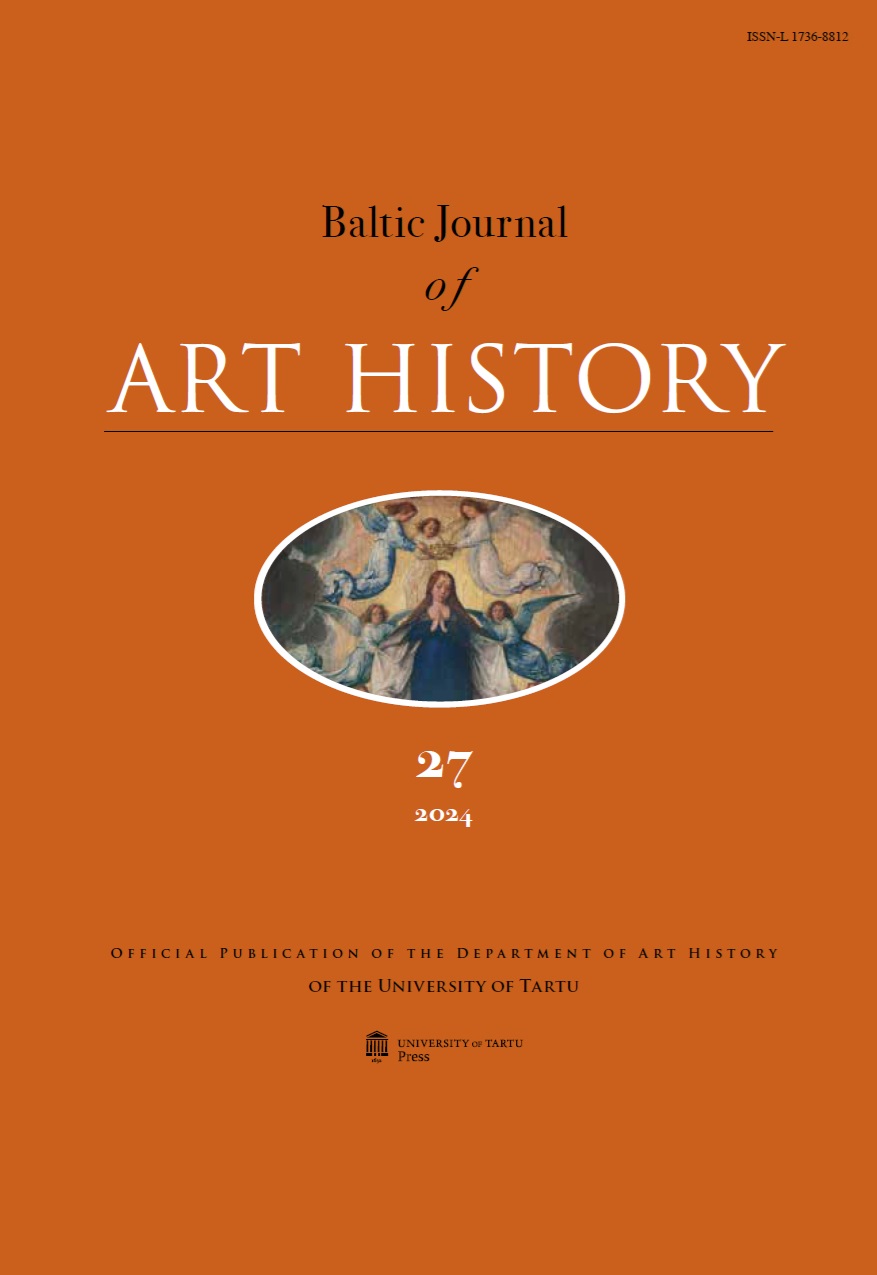Art in Medieval Tartu
DOI:
https://doi.org/10.12697/BJAH.2024.27.04Keywords:
medieval Tartu, medieval church furnishings crv e, carved stones, grave slabs, decoration of medieval dwellingsAbstract
Of the three medieval Livonian cities, Tartu is in the most challenging
position when it comes to both written and visual sources. Repeatedly
conquered and plundered during the wars of the 16th–20th centuries,
Tartu lost its medieval archives and buildings. To date, research on
medieval Tartu’s art has largely concentrated on the architecture of
its cathedral and the parish church of St. John.
This article aims to explore potential avenues for studying medieval
art in Tartu by utilizing written sources, historical drawings, and
surviving works of art. Many of the stone carvings discussed are
published here for the first time. However, the article does not intend
to present a comprehensive overview of all preserved medieval
art from Tartu – a task made impossible by the sheer number of
fragmented grave slabs alone.
The first section of the article examines written records related
to the commissioning and donation of artworks. It then reviews the
preserved carved stones and fragments from churches, including a
piscina, a sacrament niche, and several grave slabs. Carved stones
from burgher residences are even fewer, comprising an inscribed
capital, three doorside stones (Beischlagsteine), and a lintel. Analysis
of the limestone materials shows that most of the carved stones
from Tartu’s churches and dwellings were made from Lasnamäe
limestone. However, it remains unclear whether only rough blocks
were transported to Tartu or whether the artistic designs themselves
were commissioned from Tallinn masters. Finally, the article discusses
two notable artworks – a silver-gilt chalice and a bronze church bell
– both of which were likely taken to Russia following the conquest
of Tartu in 1558 during the Livonian War.
The findings highlight that, while medieval sources for studying
Tartu’s art are limited, they are more abundant than previously
assumed. Continued investigation of written records and historical
drawings holds great promise. In addition, many fragmented grave
slabs require documentation and cataloging in museum collections,
and further research into their materials is essential.

